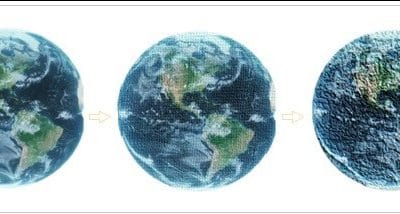When embarking on a Geographic Information System (GIS) project, one of the foundational decisions you’ll face is selecting the right coordinate system. It’s not just a technical detail—it’s the backbone of how your spatial data aligns with the real world. Choose wisely, and your maps will be accurate, intuitive, and fit for purpose.
What Is a Coordinate System?
Coordinate system is a framework for defining locations on Earth (or another surface) using numbers. In GIS, these systems translate the messy, three-dimensional reality of our planet into a format computer can process and display. There are two primary categories you’ll encounter:
- Geographic Coordinate Systems (GCS): These use latitude and longitude to pinpoint locations on a 3D model of Earth.
- Projected Coordinate Systems (PCS): These flatten the 3D globe onto a 2D plane, using linear units like meters or feet.
Geographic Coordinate Systems (GCS): The 3D Approach
A Geographic Coordinate System defines locations using angular measurements:
- Latitude: The north-south position, measured in degrees from the equator (0°) to the poles (90° N or S).
- Longitude: The east-west position, measured in degrees from the Prime Meridian (0°) to 180° E or W.
These coordinates are tied to a datum, a mathematical model of Earth’s shape. Common datums include WGS 84 (used by GPS) and NAD 83 (popular in North America). The datum ensures your coordinates align with a consistent reference ellipsoid—a slightly flattened sphere approximating Earth’s surface.
Pros
- Global consistency: Works anywhere on Earth without needing regional adjustments.
- Native format: Most raw geospatial data (e.g., GPS points) comes in a GCS.
- Minimal distortion: Represents Earth’s 3D nature accurately for location purposes.
Cons
- Angular units: Degrees aren’t intuitive for measuring distance or area (e.g., how long is 1° of longitude at the equator vs. the Arctic?).
- Not flat: GIS tools struggle to perform calculations or display maps directly in 3D space without projection.
When to Use a GCS
- Storing data in its original form (e.g., latitude/longitude points from a field survey).
- Projects spanning large areas (e.g., global climate models) where projection might overcomplicate things.
- Sharing data universally, since GCS is a standard format.
Projected Coordinate Systems (PCS): The 2D Transformation
A Projected Coordinate System takes the 3D globe and flattens it into a 2D map using a mathematical process called a map projection. Instead of degrees, it uses linear units (e.g., meters, feet) based on an X-Y grid. Examples include Universal Transverse Mercator (UTM) and State Plane Coordinate System (SPCS).
How It Works
UTM: Divides Earth into 60 zones, minimizing distortion within each zone (great for regional maps).
Web Mercator: Used by Google Maps, it preserves shape but inflates areas near the poles.
Every PCS is built on a GCS and datum, then applies a projection to create a flat coordinate grid.
Pros
- Linear units: Easy to measure distances, areas, and perform spatial analysis
- Flat display: Perfect for maps, visualizations, and GIS software rendering.
- Localized accuracy: Tailored to minimize distortion in specific regions.
Cons
- Distortion: No projection can preserve all properties perfectly—something gets skewed (shape, size, etc.).
- Limited scope: Best for smaller areas; large-scale maps (e.g., global) amplify distortions.
- Complexity: Choosing the wrong projection can misalign your data.
When to Use a PCS
- Mapping or analyzing a specific region (e.g., a city, state, or UTM zone).
- Projects requiring precise measurements (e.g., urban planning, road design).
- Visual outputs like printed maps or web applications.
Key Differences Between GCS and PCS
| Aspect Geographic (GCS) Projected (PCS) |
| Units Degrees (angular) Meters, feet (linear) |
| Shape 3D (spherical/ellipsoidal) 2D (flat plane) |
| Distortion None (true to Earth’s curve) Varies by projection |

Tips for Accuracy in Choosing a Coordinate System
Selecting the right coordinate system isn’t just about preference—it’s about aligning your choice with your project’s goals and minimizing errors. Here are actionable tips to ensure accuracy:
- Match Your Project Scale
- Small Area (e.g., a city): Use a PCS like UTM or State Plane for minimal distortion and precise measurements. For example, UTM Zone 14N works well for central U.S. projects.
- Large Area (e.g., a continent): Stick with a GCS or a projection designed for broad coverage (e.g., Albers Equal Area for North America) to balance distortion.
- Know Your Data’s Source: Check the coordinate system of your input data (e.g., shapefiles, GPS points). Use GIS software (e.g., ArcGIS, QGIS) to inspect metadata and reproject if needed.
- Minimize Distortion for Your Purpose
- Use Local Standards: Align with regional conventions. global datasets lean on WGS 84. This ensures compatibility with local surveys or government data.
- Test and Validate: Overlay your data on a basemap (e.g., OpenStreetMap) to spot misalignments. If roads or boundaries don’t match, your coordinate system might be off. Calculate a known distance (e.g., a city block) to confirm your PCS units make sense.
Conclusion
Choosing the right coordinate system for your GIS project is a balancing act between accuracy, purpose, and practicality. Geographic Coordinate Systems keep things simple and universal, while Projected Coordinate Systems unlock precise analysis and visualization for specific regions. By understanding their differences and applying these accuracy tips, you’ll ensure your maps not only look good but also tell the right story


































































































